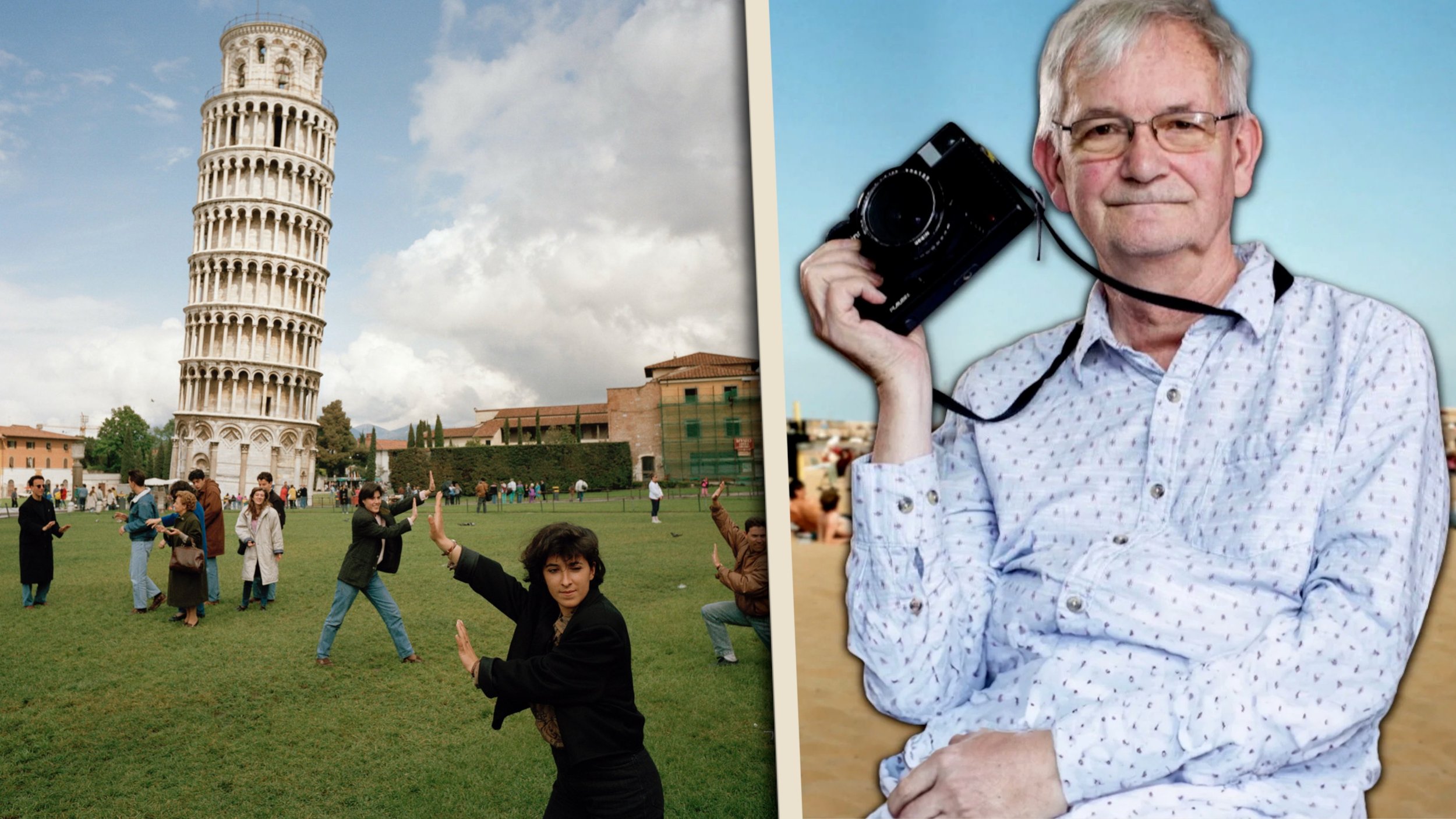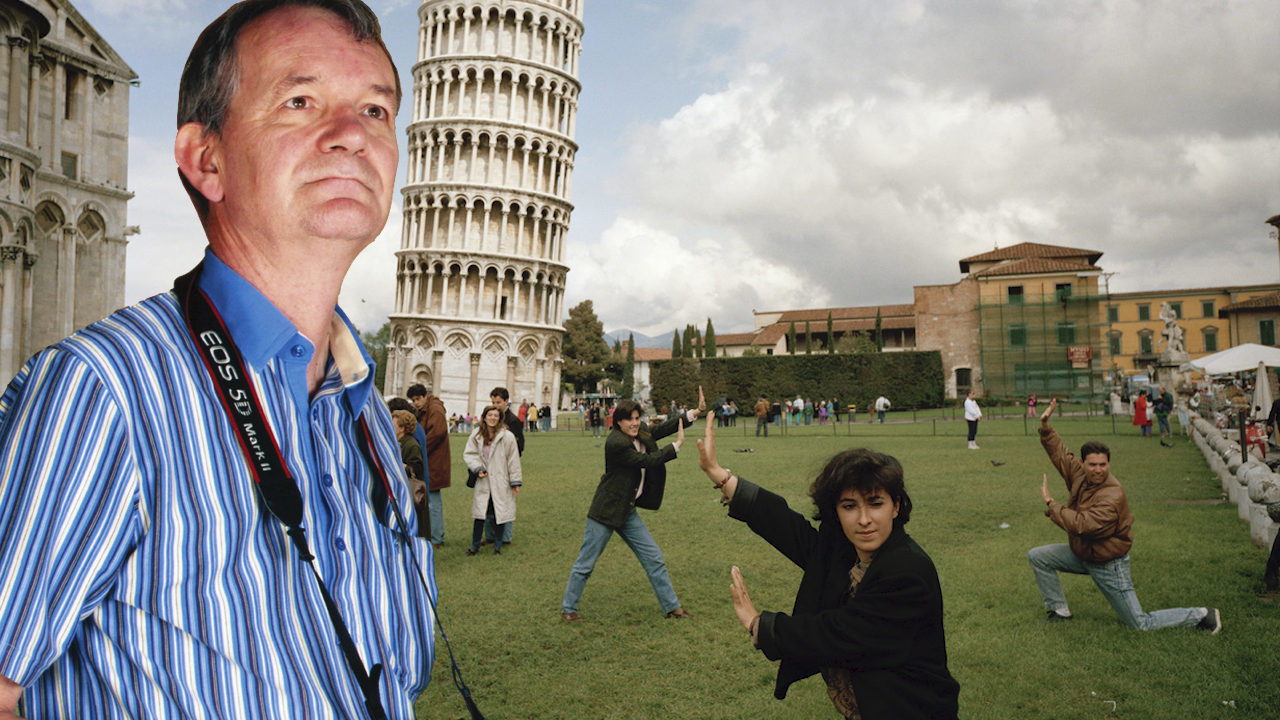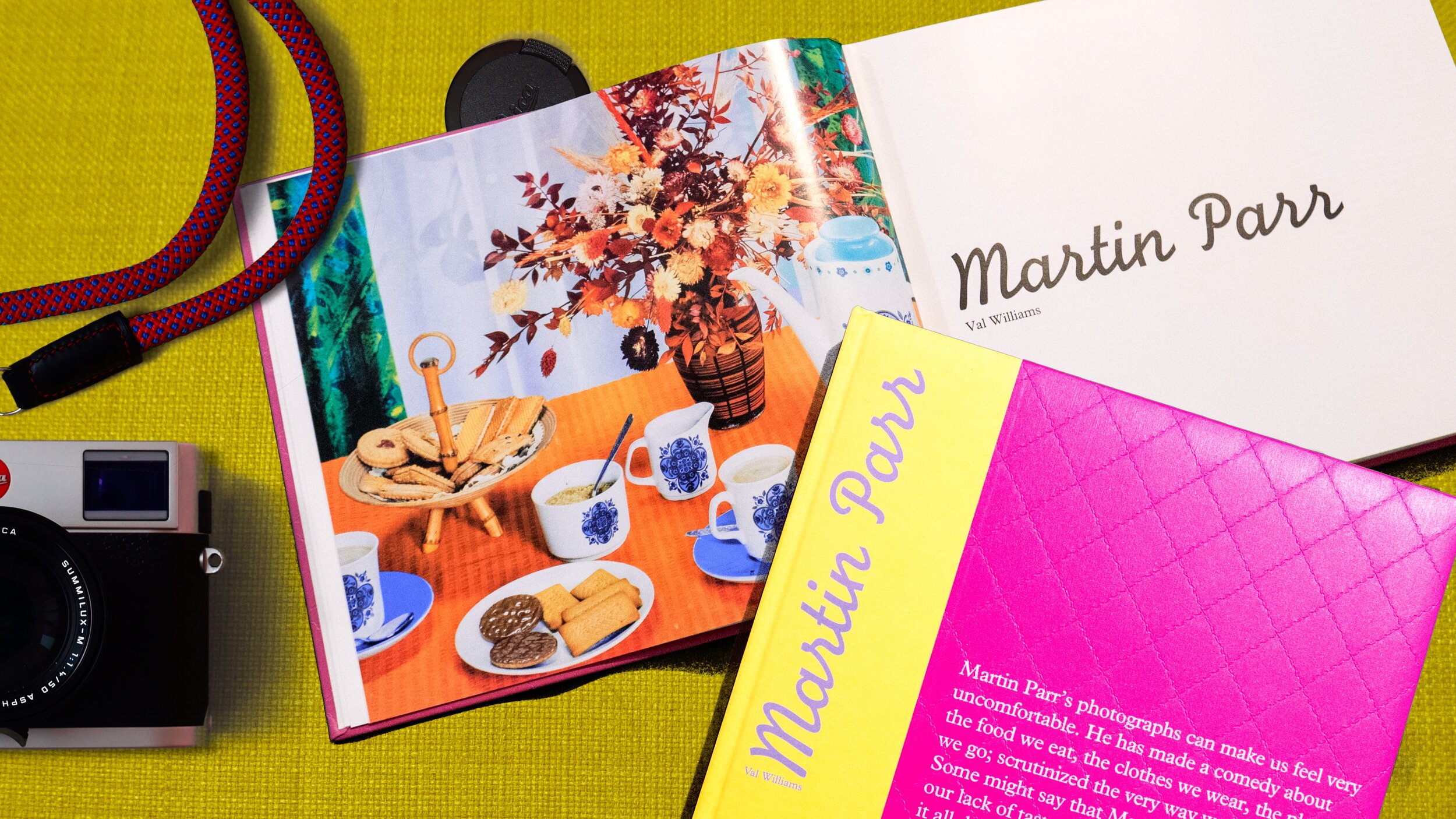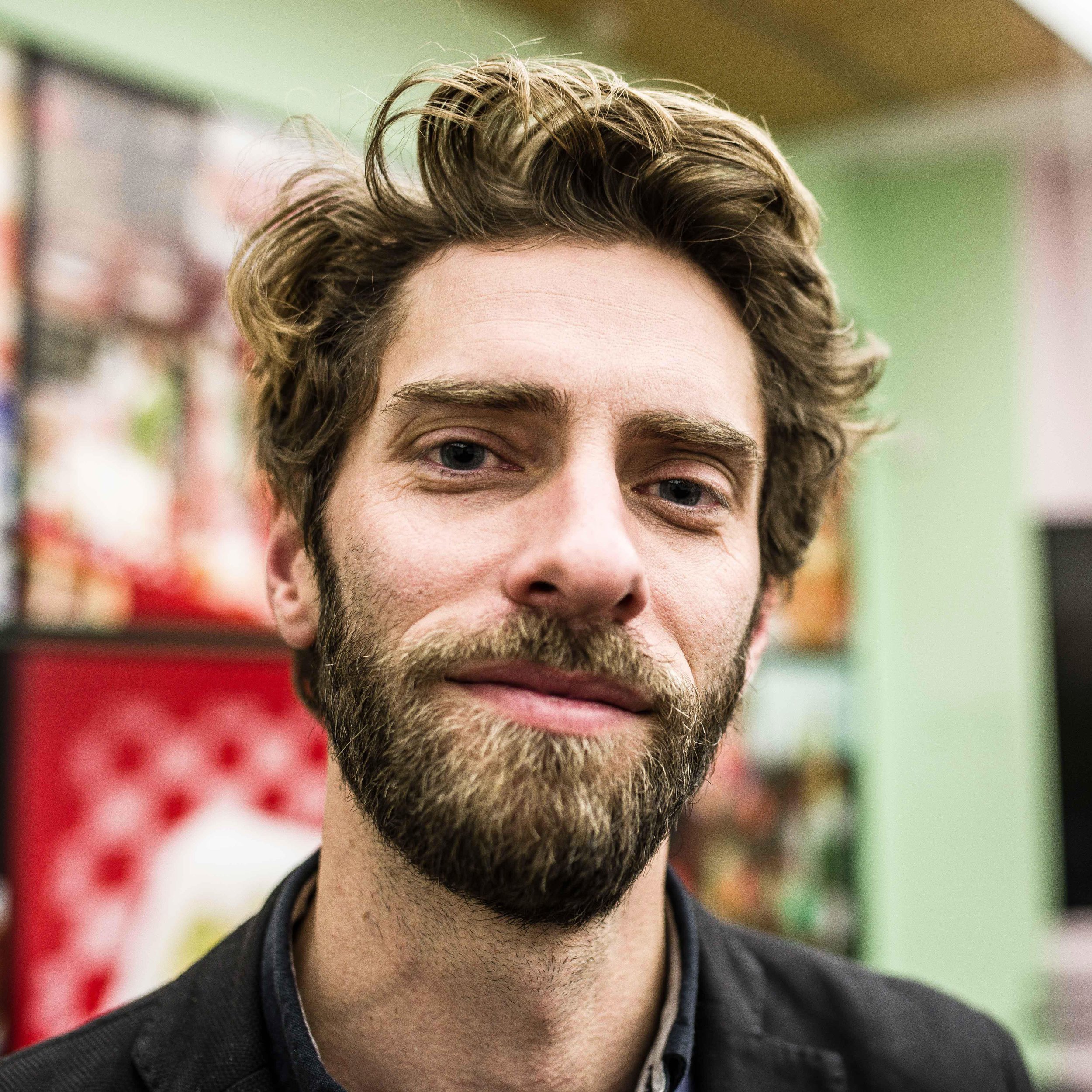Jose Villa
"The most important thing about photography is to tell a story.”
Jose Villa (website) is a renowned wedding photographer whose elegant and timeless images have earned him international acclaim. Known for his ability to capture intimate moments and breathtaking landscapes with equal skill, Villa's work has graced the pages of numerous wedding magazines and been featured on prominent wedding blogs. His unique approach to wedding photography blends fine art, documentary, and fashion photography styles, resulting in images that are both visually stunning and emotionally resonant.
Early Life and Career
Born and raised in Mexico, Jose Villa discovered his passion for photography at a young age. He was captivated by the magic of capturing moments in time and began to hone his craft by photographing friends and family. As Villa's reputation grew, he relocated to California, where he pursued a degree in photography and expanded his portfolio to include wedding photography. It wasn't long before his talent for capturing the beauty and emotion of weddings became apparent, and his work began to attract attention from clients and industry professionals alike.
Photographic Style and Techniques
Jose Villa's photographic style is characterized by its soft, romantic, and ethereal qualities. He often utilizes natural light and film photography to create images that have a timeless, dreamy feel. Villa's background in fine art and fashion photography informs his approach to composition and styling, resulting in images that are visually striking and effortlessly elegant.
In addition to his technical prowess, Villa is known for his ability to connect with his subjects on a personal level. By fostering a genuine rapport with the couples he photographs, he is able to capture intimate, authentic moments that reflect their unique love stories.
Career Highlights
Throughout his illustrious career, Jose Villa has earned numerous accolades and honors for his work. Some of his most notable achievements include:
Being named one of the top 10 wedding photographers in the world by American Photo Magazine
Having his work featured in prestigious publications such as Martha Stewart Weddings, Town & Country, and Vogue
Collaborating with leading wedding planners and designers on high-profile events
Teaching workshops and mentoring aspiring wedding photographers
Photography Gear
Jose Villa is known for his preference for film photography and his affinity for natural light. Some of the key pieces of gear in his arsenal include:
Contax 645: Villa's go-to camera, the Contax 645 is a medium format film camera renowned for its image quality and reliability. Its ability to produce images with a soft, romantic feel makes it a perfect fit for Villa's signature style.
Zeiss Lenses: To complement his Contax 645, Villa uses a selection of Zeiss lenses, known for their exceptional sharpness and color rendition.
Kodak Portra Film: Villa's choice of film stock, Kodak Portra is celebrated for its fine grain, natural color reproduction, and wide exposure latitude, making it an excellent choice for wedding photography.
Photography Books
"Fine Art Wedding Photography: How to Capture Images with Style for the Modern Bride" is an essential guide for photographers looking to invigorate their style and appeal to contemporary brides. Authored by acclaimed wedding photographer Jose Villa, this book delves into the world of fine art wedding photography, which emphasizes design and a stylized approach to create images reminiscent of those found in glossy magazines.
Jose Villa, a pioneer in this field, shares his secrets for incorporating composition, lighting, posing, and design into your images while maintaining an organic and narrative feel. Learn his trademark technique for capturing natural moments after a pose and tips for getting images right in-camera, reducing the need for heavy postproduction. The book also covers how to integrate design through delivered products, such as albums or slideshows, and the importance of nurturing clients post-wedding by expanding into baby and family portraiture.
Filled with real-life examples, solid techniques, and stunning images, "Fine Art Wedding Photography" both educates and inspires photographers seeking to update their work and cater to a new generation of brides.
Quotes
"The most important thing about photography is to tell a story. The story is what makes the image alive and powerful."
"Photography is about capturing the beauty of a moment, and a wedding is full of those moments."
"Film has a timeless quality that I think really complements the emotions and memories that are associated with weddings."
"I believe that the best photographs are the ones that capture the true essence of a person, a relationship, or a moment in time."
"My goal as a wedding photographer is to create images that not only document the day, but also evoke the feelings and emotions that the couple and their loved ones experienced."
Legacy and Influence
Jose Villa has made a significant impact on the world of wedding photography, inspiring countless photographers with his unique approach and timeless style. His passion for film photography and his dedication to capturing authentic moments has helped to shape the industry and establish a new standard of excellence for wedding imagery.
Other notable wedding photographers with similar styles include: Elizabeth Messina, KT Merry, Corbin Gurkin, and Jasmine Star. These photographers, like Villa, are known for their romantic, ethereal images and their ability to capture the beauty and emotion of a wedding day.
In conclusion, Jose Villa's influence on the world of wedding photography is undeniable. His commitment to his craft, his mastery of film photography, and his ability to connect with his subjects have earned him a place among the most respected and admired photographers in the industry. As both an artist and a mentor, Villa's legacy will continue to inspire future generations of wedding photographers to push the boundaries of their craft and create images that capture the true essence of love.
Martin Parr
“All photography is propaganda.”
Martin Parr is an internationally renowned British documentary photographer known for his satirical and thought-provoking images that capture the quirks of modern society. Born in 1952 in Epsom, Surrey, Parr has spent over four decades chronicling the lives of people around the world, often focusing on consumerism, tourism, and globalization. His unique approach to documentary photography has made him one of the most influential photographers of his generation.
Early Life and Career
Growing up, Parr was introduced to photography by his grandfather, who was an amateur photographer. He went on to study photography at Manchester Polytechnic (now Manchester Metropolitan University) from 1970 to 1973. After completing his education, Parr began his career as a freelance photographer, working for various publications and exploring his own personal projects.
In the early 1980s, Parr became a member of the prestigious Magnum Photos agency, where he continued to refine his distinctive style. His first significant body of work, "The Last Resort," showcased images of British seaside towns and the working-class families who vacationed there. This series garnered attention for Parr's bold use of color and his unflinching portrayal of everyday life.
Photographic Style and Techniques
Parr's photographic style is characterized by his use of bright, saturated colors and his ability to find humor and irony in seemingly mundane situations. He often uses flash photography to enhance the vividness of his images and to create a sense of artificiality. His work is notable for its focus on the peculiarities of human behavior, as well as its commentary on consumer culture, social class, and globalization.
Career Highlights Throughout his career, Martin Parr has published numerous photo books and exhibited his work in galleries and museums worldwide. Some of his most acclaimed projects include:
"The Last Resort" (1986): This series captured the essence of British seaside towns during the 1980s, exploring themes of leisure, consumerism, and social class.
"Small World" (1995): A project documenting the impact of tourism on cultures around the world, highlighting the homogenization of global experiences.
"Common Sense" (1999): An exploration of consumer culture, featuring close-up images of everyday objects and scenes that reveal the absurdity and excess of modern life.
"Think of England" (2000): A collection of images that provide a satirical look at English society and culture, from afternoon tea to football matches.
"The Rhubarb Triangle" (2016): A series documenting the unique rhubarb-growing region in West Yorkshire, England, and the people who work within it.
Photography Gear
Throughout his career, Martin Parr has used a variety of cameras and equipment, including:
Medium format cameras such as the Mamiya 7 and the Plaubel Makina 67
35mm cameras like the Leica M series and the Contax G2
Flash equipment, particularly the ring flash, to create his signature artificial lighting
Published Photo Books
"The Last Resort" by Martin Parr: This influential book features Parr's early photographs of the seaside town of New Brighton, England. The vivid and saturated images depict the leisure time of working-class families, showcasing Parr's signature style and offering a unique perspective on British culture during the 1980s.
"Martin Parr" by Martin Parr and Val Williams: This comprehensive monograph covers Parr's extensive career, exploring his distinctive approach to photography and his fascination with the everyday. The book includes an in-depth interview with the photographer, as well as critical essays that contextualize his work within the broader history of photography.
"Martin Parr: The Non-Conformists": In this book, Parr documents the close-knit communities and traditional industries of West Yorkshire, England, during the 1970s. The black-and-white images showcase Parr's early work, offering a glimpse into the lives of people striving to maintain their identity and traditions in the face of change.
"Small World": This humorous and satirical collection captures the quirks of mass tourism and globalization. Parr's photographs, taken across various countries, reveal the absurdity and sameness of tourist experiences, prompting readers to reconsider their own travel habits.
"Déjà View: Martin Parr x The Anonymous Project": In this collaboration with The Anonymous Project, Parr curates a selection of found amateur color slides, creating a nostalgic and captivating visual journey through the mid-20th century.
"Martin Parr: From the Pope to a Flat White, Ireland 1979-2019": This book spans Parr's 40-year relationship with Ireland, showcasing his vivid and witty observations of the country's culture, people, and landscape. The images provide a unique and affectionate perspective on a nation in transition.
"Martin Parr: Beach Therapy": In this collection, Parr explores the universal appeal of the beach as a place of leisure and relaxation. The book features images from beaches around the world, capturing the idiosyncrasies of beachgoers and highlighting Parr's ability to find humor and beauty in the everyday.
Quotes
"Photography is the simplest thing in the world, but it is incredibly complicated to make it really work."
"I go straight in very close to people, and I do that because it's the only way you can get the picture. You go right up to them."
"The world is full of surprises, and I want to record those surprises. That's why I'm always looking for things that are humorous or strange."
"With photography, I like to create fiction out of reality. I try and do this by taking society's natural prejudice and giving it a twist."
"I'm not an artist who happens to use photography. I'm a photographer who uses the camera as my medium."
Legacy and Influence Martin Parr's distinctive style and approach to documentary photography have left a lasting impact on the field. His unapologetic use of color, flash photography, and satirical observations have inspired a new generation of photographers to explore similar themes and techniques. Parr's work has contributed to a greater understanding of the complexities of modern society and has encouraged photographers to find beauty and meaning in the everyday.
One of Parr’s early inspirations were:
Tony Ray-Jones was a British photographer known for his influential work in the field of social documentary photography. Born in Somerset in 1941, Ray-Jones studied graphic design in London before beginning his career as a photographer. He is best known for his photographs of English customs and traditions, capturing the eccentricities of everyday life in Britain during the 1960s and 1970s.
Chris Killip is a British photographer and professor of visual and environmental studies at Harvard University. Born in the Isle of Man in 1946, Killip is best known for his black and white photographs of working-class communities in the northeast of England during the 1970s and 1980s. His images depict the struggles of these communities against deindustrialization and unemployment, and they have become important documents of social history.
Other notable photographers with similar style are:
Alex Webb: Renowned for his vibrant color photography and use of complex compositions that capture the energy of street life.
Bruce Gilden: Known for his confrontational, up-close street photography that highlights the raw, unfiltered moments of urban life.
William Eggleston: A pioneer in the field of color photography who captures the beauty and strangeness of everyday scenes in the American South.
Tom Wood: An Irish-born photographer who documents the everyday lives of people in Liverpool, England, with a keen eye for color and detail.
Viviane Sassen: A Dutch artist and fashion photographer whose work often features bold colors and surreal compositions, drawing inspiration from her upbringing in Kenya.
By examining Martin Parr's career and the photographers with similar styles, it's clear that his influence on contemporary photography is undeniable. His unique approach to documenting the world around him has opened new avenues for photographers to explore, making him an essential figure in the history of photography.
Robert Capa
"If your photographs aren't good enough, you're not close enough"
Robert Capa, born André Friedmann in 1913 in Budapest, Hungary, is widely regarded as one of the most influential war photographers in history. Known for his up-close and personal images of conflict, Capa's work not only documented the events of his time but also humanized the people affected by war. His iconic photographs from the Spanish Civil War, World War II, and other conflicts have left an indelible mark on the field of photojournalism.
Early Life and Career
Capa's interest in photography began during his adolescence, and after relocating to Berlin in 1931, he started working as a darkroom assistant for the German photographic agency, Dephot. In 1933, he moved to Paris to escape the rise of the Nazis in Germany. It was in Paris where he adopted the name Robert Capa, which he believed would help him be more marketable as a photographer.
His first major break came in 1936 when he covered the Spanish Civil War alongside his partner, Gerda Taro. Capa's images from the conflict, particularly the photograph known as "The Falling Soldier," brought him international recognition.
Photographic Style and Techniques
Capa's approach to photography was characterized by his commitment to getting as close to the action as possible. He famously said, "If your pictures aren't good enough, you're not close enough." This philosophy led him to take risks in order to capture the intensity and emotion of the events he covered.
While his style was primarily documentary, Capa's images also possessed an artistic quality, with a focus on composition and storytelling. His ability to capture the humanity of his subjects, even in the midst of conflict, set his work apart and made it both emotionally compelling and historically significant.
Career Highlights
In addition to his work during the Spanish Civil War, Capa covered many of the major conflicts of his time, including the Second Sino-Japanese War, World War II, the 1948 Arab-Israeli War, and the First Indochina War. Some of his most iconic images come from the D-Day landings in Normandy, where he risked his life to capture the chaos and heroism of the soldiers on the beach.
Capa was also one of the co-founders of the prestigious Magnum Photos agency, alongside fellow photographers Henri Cartier-Bresson, George Rodger, and David "Chim" Seymour. This agency has since become a platform for some of the world's most renowned photographers.
Photography Gear
Throughout his career, Capa primarily used:
Contax II rangefinder camera
Rolleiflex TLR camera
Published Photo Books
"Robert Capa: 1933–1954" by Gabriel Bauret and Robert Capa: This book presents a comprehensive overview of Robert Capa's photographic career, spanning from 1933 to 1954. It includes his iconic images from various wars, as well as lesser-known photographs from his travels and assignments. The book offers readers a visual journey through Capa's work, showcasing his unique talent for capturing the human experience amidst conflict.
"Slightly Out of Focus" by Robert Capa: This memoir by Robert Capa provides a personal account of his experiences as a war photographer during World War II. Through his engaging storytelling, Capa offers readers a glimpse into the challenges and rewards of being a photojournalist in a war zone. The book also features several of his photographs, providing a visual narrative that complements the text.
"Robert Capa: Photographs" by Richard Whelan and Robert Capa: This collection of Capa's photographs, curated by Richard Whelan, highlights the range and depth of his work, including his renowned war images and portraits of famous personalities. The book offers a visual exploration of Capa's unique style and his ability to capture the intensity and emotion of his subjects.
"Robert Capa: The Definitive Collection" by Richard Whelan and Cornell Capa: This book features a selection of Capa's most iconic photographs, curated by his brother Cornell Capa and biographer Richard Whelan. The collection showcases Capa's powerful images from various conflicts, as well as intimate portraits of the people he encountered during his career. It serves as a testament to Capa's enduring impact on the world of photography.
"Robert Capa at Work: This is War: Photographs 1936-1945" by Richard Whelan and Robert Capa: This book focuses on Capa's war photography during the Spanish Civil War, the Chinese resistance to Japanese invasion, and World War II. The collection features Capa's striking images alongside his own written accounts, providing readers with a deeper understanding of the events and emotions behind the photographs.
"Blood And Champagne: The Life And Times Of Robert Capa" by Alex Kershaw: This biography delves into the life and career of Robert Capa, exploring his personal relationships, professional experiences, and the events that shaped his approach to photography. The book offers a comprehensive look at Capa's life, providing insights into his motivations and the experiences that influenced his work.
Quotes
"The truth is the best picture, the best propaganda."
"In a war, you must hate somebody or love somebody; you must have a position or you cannot stand what goes on."
"The war is like an actress who is getting old. It's less and less photogenic and more and more dangerous."
"For a war correspondent to miss an invasion is like refusing a date with Lana Turner."
"I would say that the war correspondent gets more drinks, more girls, better pay, and greater freedom than the soldier, but at this stage of the game of the game, having the freedom to choose his spot and being allowed to be a coward and not be executed for it is his torture."
Legacy and Influence
Robert Capa's fearless approach to photojournalism and his dedication to capturing the human experience during times of conflict have left a lasting impact on the world of photography. His images serve as both historical documents and powerful works of art, reminding us of the consequences of war and the strength of the human spirit.
Robert Capa's contributions to the field of photography are undeniable, and his legacy lives on through the work of those who continue to push the boundaries of photojournalism and capture the world in all its complexity.























![Martin Parr's advice for better photos[video]](https://images.squarespace-cdn.com/content/v1/5b670534b98a78d5e84a7d19/1709316822341-S7A2G20XX4CL7RHLYW0S/Advice+for+better+photos+Parr+no+text.jpg)










































Every bad picture is a step toward a good one. Martin Parr knows this better than most photographers. Interviews